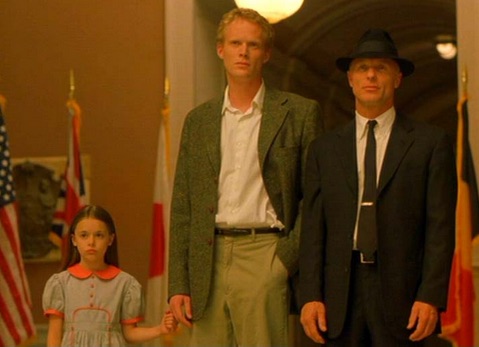About two years into recovery from the brokenness in my life, I watched the movie, A Beautiful Mind, the story of Dr. John Nash, the Nobel-winning mathematician from Princeton. He suffered from paranoid schizophrenia that caused his brain, among other things, to “see” people who didn’t exist. Watching the movie we are led to unknowingly see Dr. Nash’s life with the same eyes by which he “saw” life. We saw Parcher, the G-man, which was confusing. Then, we saw his roommate, Charles, and occasionally we saw Charles’ young niece, Marcee, who would occasionally visit the campus.
Then suddenly, later in the movie, the tables turn on us. It is revealed that John Nash lived alone on campus. What? He did not have a roommate? Charles and Marcee were not real? They didn’t exist? Nope, they never did. As audience members we are stunned, for we, too, were just as convinced of the reality of Charles and Marcee as was Nash himself!
The turning point for John Nash comes several years after grad school, when in a desperate moment he blurts out to his wife, “She never gets old.” What? “She never gets old,” he repeats. Nash is referring to Marcee, whom he continues to see on occasion with her uncle Charles. It has been several years, now, and the young Marcee should be a teenager; however, she continues to show up in his life as the same six-year old girl. She is always six-years old —–all through the years!
This was the first crack in his delusional armor. With this revelation, Nash finally accepts that all is not well in his brain; so from now on, no matter how real and present Charles and Marcee appear to be, he must ignore them. They are not really there. What appears to be real, is not true for him. It is false.
In that moment in the movie, I had an epiphany: “Well, I’ll be,” I said . . . . “my mind operates the same way!” All was not well in my brain, either, for I “saw” reality a certain way, and I held on to that way dearly. I lived and made choices as if my beliefs were true. But certain ones definitely were not.
In my brokenness, I held as true what was clearly false.
I’m quite sure you have, too. Let me provoke your thinking.
Do you believe that you are unworthy of love, or unworthy of having your prayers answered, or unworthy of being blessed by God? But it’s not true.
Do you believe that you will never be loved the way you want to be loved? But it’s not true.
Do you believe that you don’t have to forgive your sister-in-law? But it’s not true.
Do you believe that you will never get over your past? But it’s not true.
Are you apparently devoted to the belief that it’s okay to be mean to your wife if she’s mean to you? Though it’s not a truth you found in Scripture.
Do you take notes on the pastor’s sermon, “Submission in the Home,” but remain devoted to the mindset that you will not be preferential for one minute in your marriage?
Do you believe that you are more important than you really are? But it’s definitely not true!
We believe all kinds of crazy notions, self-righteous notions, relationship-killing convictions, intimacy-busting ideas, and self-serving opinions. None of them are true. But we are dedicated to them, convinced they are true, not daring to entertain any doubt of their veracity; holding on to them with a most tenacious, religious devotion. We have our own Charles and Marcee.
But they are not true.
In my own brain, I was convinced that some of my beliefs were the truth, and I built a sinful, selfish life around them. In fact, they were lies from the world, my flesh and the enemy. I had agreed with them on some past day of great hurt. I held on to them for protection, refusing to give them up. Then I used them to serve my self-justification, “to be right.”
Falsehoods which we tenaciously believe, we call Strongholds (2 Cor 10:4-5). When we tear them down, we change at the level of Identity.
-Carter


